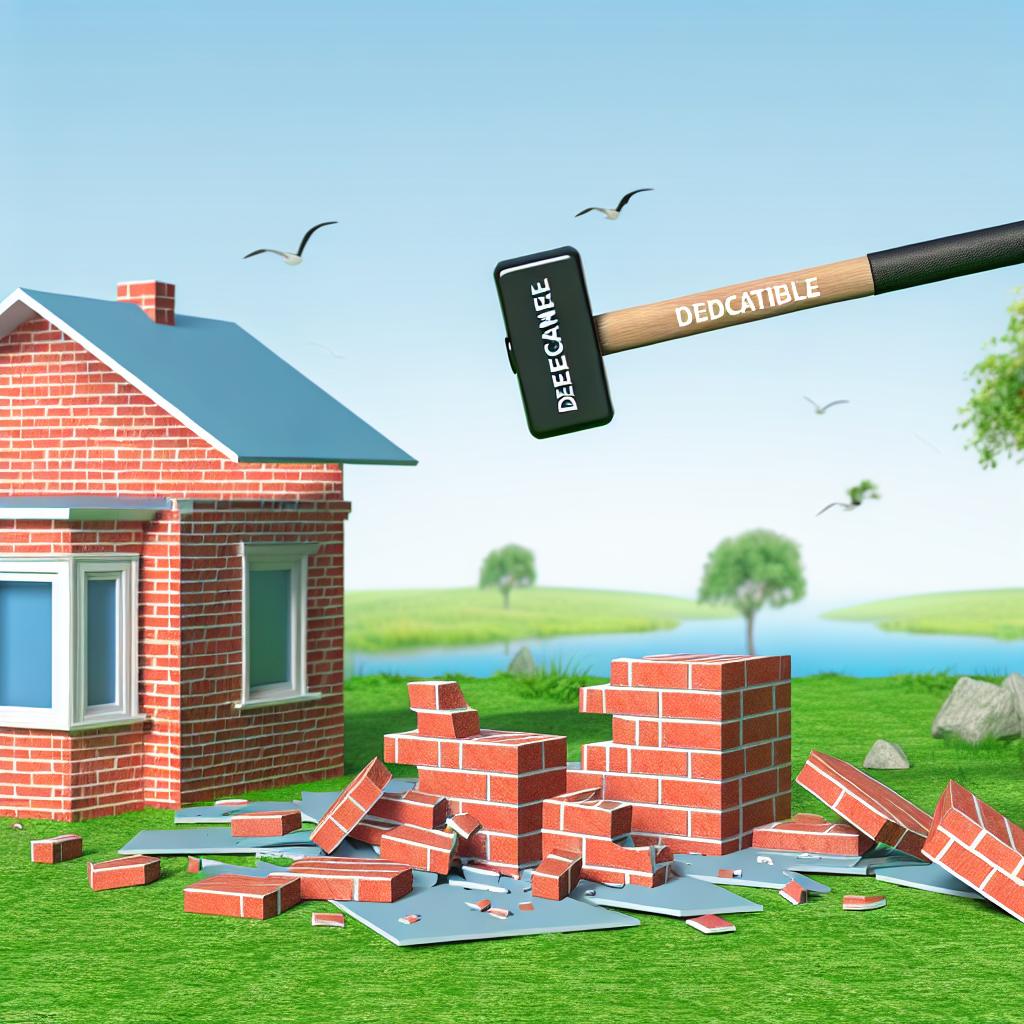Understanding Deductibles in Home Insurance
A deductible is a fundamental aspect of many insurance policies, including home insurance. It is essentially the sum that the policyholder needs to pay out-of-pocket before the insurance company steps in to handle the remaining costs associated with a claim. Gaining a clear understanding of how deductibles operate is crucial for anyone aiming to manage their insurance premiums effectively.
How Deductibles Work
In the context of home insurance, when you file a claim, the deductible gets deducted from the total amount of the claim. For example, suppose you possess a deductible of $1,000 and the total claim amounts to $10,000. In this scenario, you would need to pay the initial $1,000, after which your insurer would cover the remaining $9,000. This structure is strategically designed to align the interests of both the insurer and the policyholder by sharing the risk and ensuring both parties have a stake in the financial outcome.
Types of Deductibles
Home insurance policies typically feature either a flat deductible or a percentage-based deductible. A flat deductible involves a fixed dollar amount, whereas a percentage-based deductible is tied to the insured value of your home. It’s vital to review your policy thoroughly to understand which type of deductible it entails. This understanding can significantly affect your out-of-pocket costs and decision-making processes when filing a claim.
Flat Deductibles
The flat deductible is straightforward. Regardless of your home’s value, your out-of-pocket cost is predetermined. This can simplify budgeting for potential claims but might not always reflect the house’s true value.
Percentage-based Deductibles
On the other hand, a percentage-based deductible corresponds to a portion of the insured value of your home. For instance, if your home is insured for $200,000 and your deductible is 2%, your deductible would amount to $4,000. While this might align more closely with the property’s value, it could lead to higher out-of-pocket costs, particularly on high-value homes.
Impact of Deductibles on Premiums
The deductible amount you choose directly affects the premium of your home insurance, which is the amount you periodically pay to maintain your coverage.
Higher Deductibles: When you choose a higher deductible, your premium usually decreases. This decrease occurs because you agree to bear a larger portion of the financial responsibility if a claim is filed. Many policyholders opt for higher deductibles as a method to decrease their regular insurance costs either monthly or annually.
Lower Deductibles: Conversely, opting for a lower deductible leads to higher premium payments. This choice might increase your upfront release, but it results in lower out-of-pocket expenses when you actually file a claim. Policyholders who prefer this option are often those seeking enhanced financial protection against losses.
Considerations When Choosing a Deductible
It is essential to consider your financial health and risk tolerance while determining the right deductible level. If you have sufficient savings to cover potential out-of-pocket expenses, a high deductible could be financially advantageous. However, if you need ready access to funds, a lower deductible might be more suitable.
It is also beneficial to explore different insurance providers and policies to determine the best balance between deductible levels and premium costs. Each provider might offer various plans, incentives, and discounts that can impact the cost and coverage of your policy. Understanding these options can empower you to make an informed decision that aligns with your financial goals and circumstances.
Evaluating Financial Readiness
Before deciding on a deductible, evaluate your financial readiness for potential claims. Assess your savings and ascertain if you have the liquidity to cover a higher deductible without impacting your financial stability. This evaluation will contribute significantly to making a prudent choice that accommodates unexpected events.
Long-term Financial Planning
Incorporating your deductible decision into your broader financial planning can also be prudent. Consider how your choice will fit into your overall financial strategy, including savings goals, debt management, and investment plans. This approach ensures that any impact from insurance claims remains manageable and within your financial plans.
Conclusion
A deductible is a vital component of home insurance that affects both your financial responsibility during claims and your insurance premiums. By thoroughly understanding how deductibles operate, alongside considering personal financial circumstances and risk preferences, one can make informed decisions about appropriate deductibles. This understanding not only aids in selecting a financially suitable policy but also ensures preparedness for unforeseen events. Evaluating your needs diligently ensures that you are better prepared to navigate the complexities of home insurance effectively.
